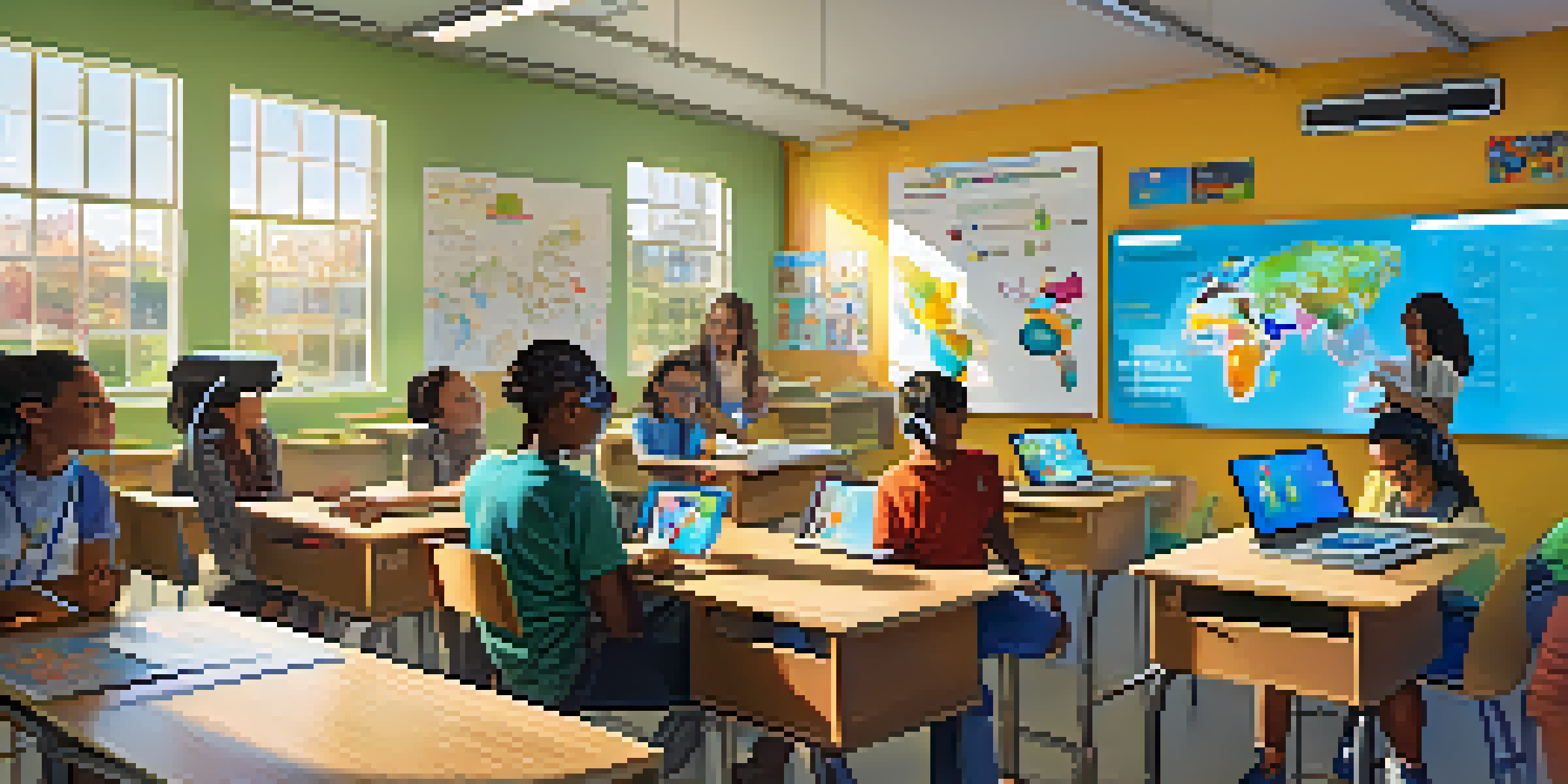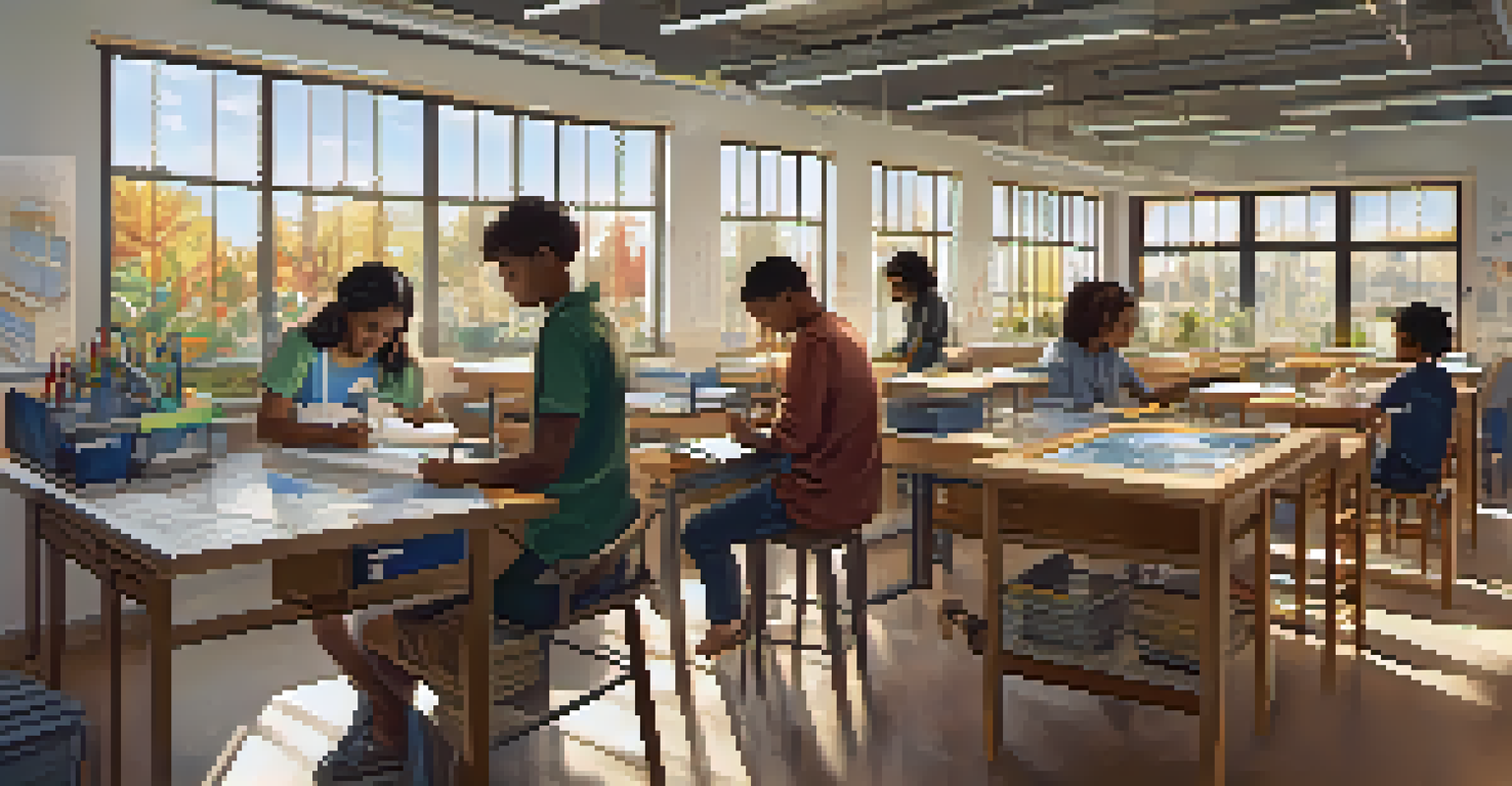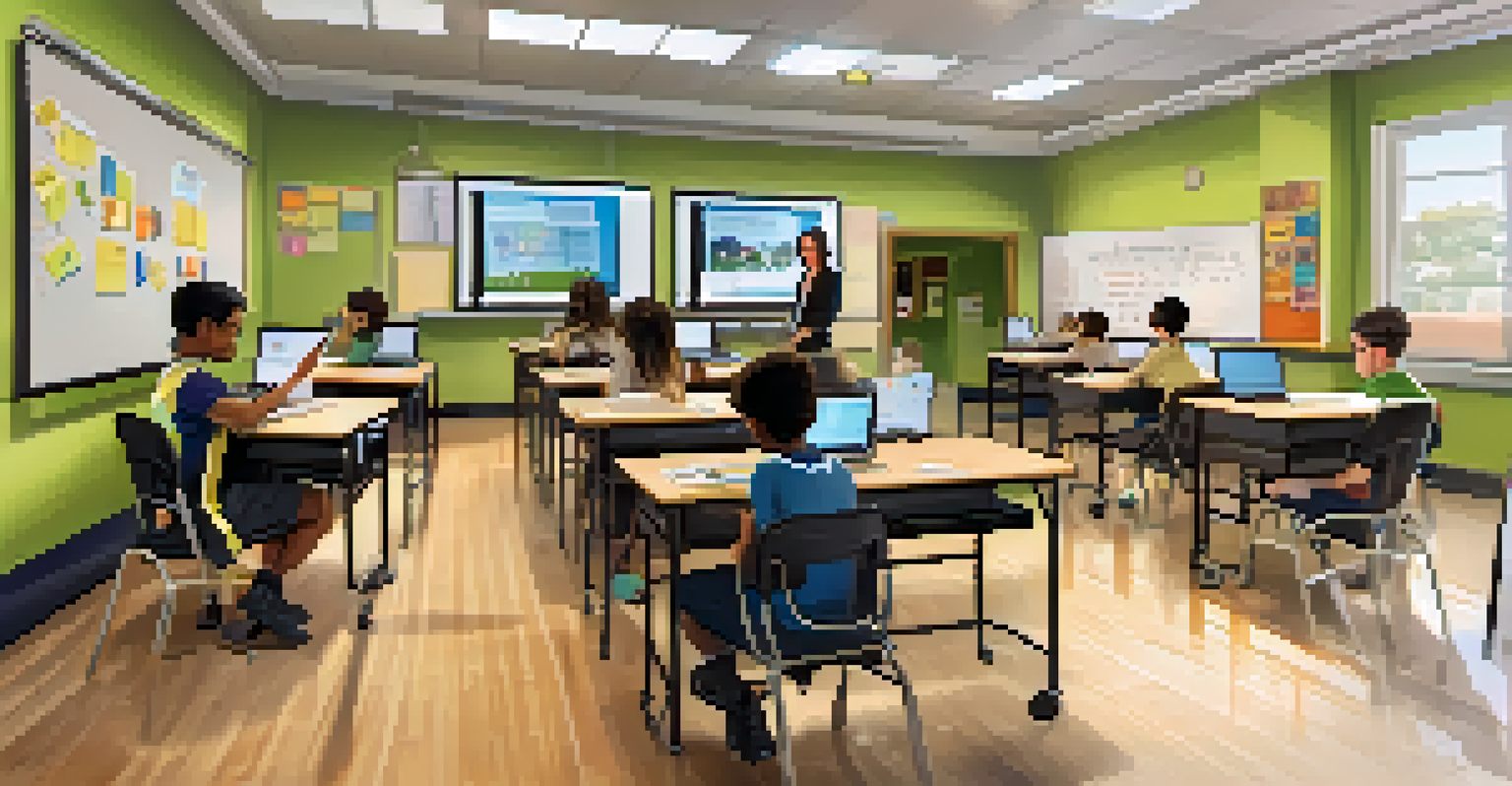Innovative Teaching Strategies for Future-Ready Students

Embracing Technology in the Classroom
In today's digital age, integrating technology into education is essential. Tools like interactive whiteboards, tablets, and educational apps engage students in ways traditional methods can't. For instance, using virtual reality can transport students to ancient civilizations or distant planets, making lessons more immersive and exciting.
Technology is best when it brings people together.
Moreover, technology helps cater to different learning styles. Visual learners benefit from videos, while auditory learners can engage with podcasts and lectures. This personalized approach ensures that every student can absorb information in a way that resonates with them.
Additionally, fostering digital literacy prepares students for a tech-driven workforce. By teaching them how to navigate online resources and use software tools effectively, we equip them with skills they'll need in their future careers.
Project-Based Learning: Real-World Applications
Project-based learning (PBL) shifts the focus from rote memorization to hands-on experiences. Students work on projects that tackle real-world problems, which helps them understand the relevance of their studies. For example, a project on renewable energy could inspire students to design a solar panel prototype.

This approach not only enhances critical thinking but also promotes collaboration. Working in groups, students learn to communicate effectively, share ideas, and problem-solve together. These social skills are crucial for success in any career.
Tech Enhances Learning Engagement
Integrating technology like VR and educational apps makes lessons more immersive and caters to different learning styles.
Moreover, PBL encourages self-directed learning. Students take ownership of their education, pursuing their interests and passions within project parameters, making learning more engaging and meaningful.
Flipped Classroom: Learning Beyond Four Walls
The flipped classroom model reverses traditional teaching methods. Instead of learning new content in class and doing homework at home, students watch lectures at home and engage in hands-on activities in class. This shift allows for deeper understanding and application of concepts.
Education is not the filling of a pail, but the lighting of a fire.
For instance, a math teacher might assign a video on algebraic equations for homework, then use class time for collaborative problem-solving. This method fosters a more interactive classroom environment, where teachers can address individual questions and provide immediate feedback.
Additionally, this approach accommodates different learning paces. Students can pause and replay video lessons as needed, ensuring they grasp the material before moving on to more complex topics.
Social-Emotional Learning: Building Resilience
Incorporating social-emotional learning (SEL) into the curriculum is vital for developing well-rounded students. SEL teaches skills like empathy, self-regulation, and resilience, which are essential in today's world. For example, role-playing scenarios can help students practice conflict resolution and effective communication.
Understanding emotions also fosters a supportive classroom environment. When students feel safe and respected, they are more likely to participate and take risks in their learning. This sense of belonging encourages a positive attitude towards school and education.
PBL Builds Real-World Skills
Project-based learning encourages hands-on experiences and collaboration, helping students tackle real-world problems.
Furthermore, SEL can improve academic performance. Research shows that students who engage in SEL programs often see enhanced grades and test scores, as they develop strong emotional and social skills that contribute to their overall success.
Gamification: Learning Through Play
Gamification introduces game-like elements into the learning process, making education fun and engaging. By incorporating points, badges, or leaderboards, teachers can motivate students to participate actively. For instance, a history lesson could turn into a scavenger hunt where students earn rewards for completing tasks.
This strategy not only boosts engagement but also fosters a sense of achievement. As students progress through levels or earn badges, they develop persistence and a growth mindset, understanding that effort leads to success.
Moreover, gamification encourages healthy competition. Students can collaborate in teams, learning the importance of teamwork and strategy while achieving their educational goals.
Culturally Responsive Teaching: Inclusivity in Learning
Culturally responsive teaching recognizes and values students' diverse backgrounds. By incorporating varied cultural perspectives into lessons, teachers can create a more inclusive environment. For instance, discussing literature from different cultures can broaden students' horizons and deepen their understanding of global issues.
This approach not only validates students’ identities but also fosters respect among peers. When students see their cultures represented in the curriculum, they feel more engaged and motivated to learn.
Lifelong Learning Cultivates Curiosity
Fostering a culture of lifelong learning inspires students to explore interests and adapt to an ever-changing world.
Additionally, culturally responsive teaching can improve academic performance. Research has shown that when students feel their identities are respected, they are more likely to participate actively and excel in their studies.
Interdisciplinary Learning: Connecting the Dots
Interdisciplinary learning breaks down the walls between subjects, allowing students to see the connections in knowledge. For example, a project that combines science and art can help students understand the principles of physics while expressing creativity through design. This holistic approach makes learning more relevant and engaging.
By integrating multiple disciplines, students develop critical thinking skills as they learn to approach problems from different angles. This practice mirrors real-world scenarios, where complex issues often require knowledge from various fields.

Furthermore, interdisciplinary learning prepares students for future careers. In a world where collaboration across disciplines is common, having the ability to integrate knowledge will be invaluable.
Lifelong Learning: Cultivating Curiosity
Fostering a culture of lifelong learning is essential in preparing students for the future. Encouraging curiosity and a passion for learning helps students develop skills that extend beyond the classroom. For instance, teachers can inspire students to explore topics of personal interest through independent research projects.
Moreover, promoting lifelong learning prepares students to adapt to an ever-changing world. In a fast-paced job market, the ability to learn new skills is crucial for career advancement. By instilling a love for learning, we equip students to thrive in any environment.
Additionally, lifelong learning encourages self-reflection. Students learn to assess their strengths and weaknesses, setting personal goals that drive their educational journeys and personal growth.